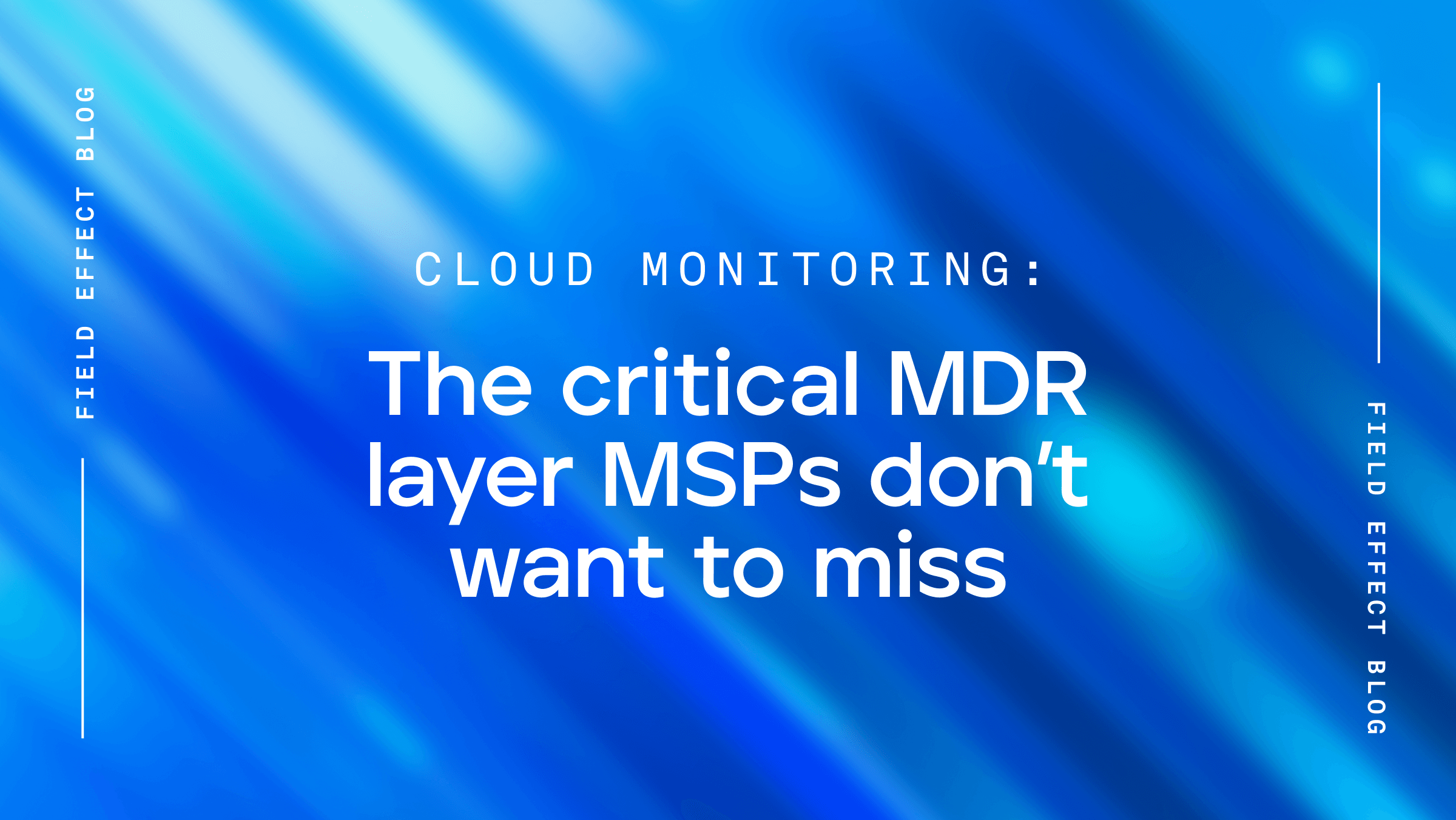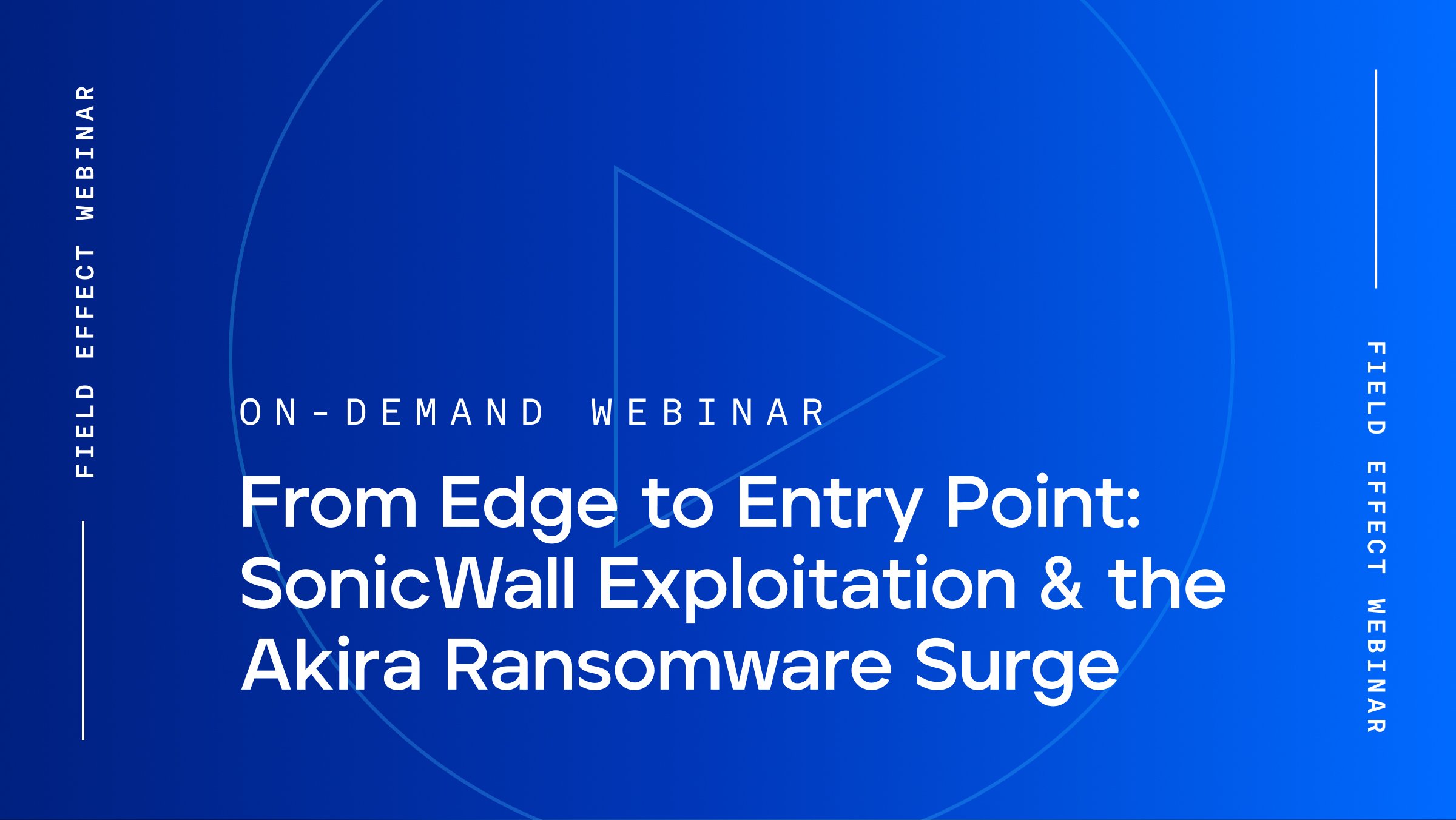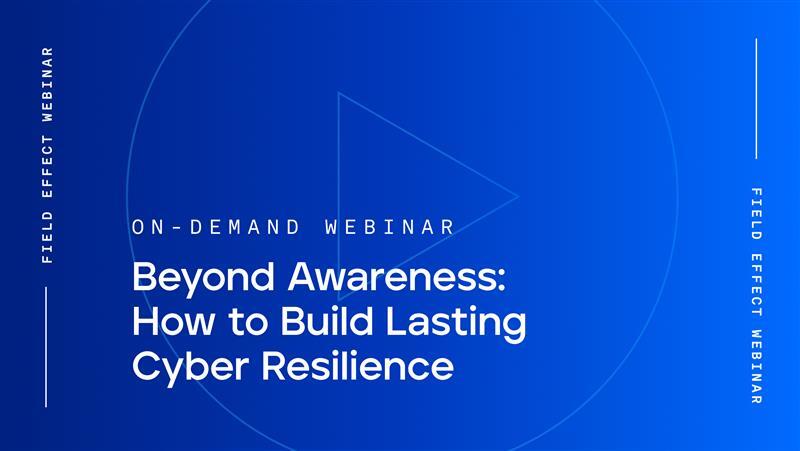
Blog Post
July 5, 2023 | Cybersecurity education
By Field Effect
As a modern business owner, you know that cybersecurity is important. Between the (often daunting) statistics, news reports, and maybe even your own past experiences, it's no secret that you need sufficient security measures in place to protect your data, assets, and operations from cyberattacks.
Knowing what those measures are and how to implement them, however, is where things become a little less clear.
This article explores seven basic cybersecurity best practices that you can start following today to protect your business against cyber threats. Before we delve into the details, though, let's first run through a few key cybersecurity concepts.
Cybersecurity refers to the protection of digital systems, networks, and data from unauthorized access, disruption, or theft. It involves implementing measures to safeguard sensitive information, prevent cyberattacks, and ensure business continuity.
Cybersecurity can encompass many areas, including network security, data encryption, employee training, incident response planning, and regular system updates. The goal is typically to mitigate cyber risks to avoid a cyberattack (and its potential damages).
In cybersecurity, even small actions can have a big impact. There are many steps organizations take to defend against cyberattacks, and these seven best practices are a great place to start.
Ransomware has emerged as one of the most serious security concerns for businesses globally. In Canada specifically, a ransomware study conducted by TELUS found that 83% of Canadian organizations reported an attempted ransomware attack.
Ransomware attacks have grown in sophistication and prevalence, targeting organizations across various industries and sizes. In these attacks, cybercriminals encrypt key data, essentially holding it hostage while demanding a ransom for its release.
Whether the payment is made or not, and many experts recommend the latter, ransomware attacks can disrupt business operations and lead to significant financial losses.
Every business has a built-in vulnerability—its people. Among the ever-increasing cybercrimes that organizations face daily, spear phishing and phishing are among the most common.
Cybercriminals engineer the messages before either sending them out broadly (phishing) or narrowly (spear phishing), to trick the recipient into performing an action that enables the attack.
The goal of these attacks, often delivered by email but other times by text or phone call, is often to obtain sensitive information such as bank account numbers or passwords.
The growing number of Internet of Things (IoT) devices in workplaces bring with them new vulnerabilities.
Dive into the past, present, and future of cybersecurity with The State of Cybersecurity eBook.
Inadequately secured IoT devices can be entry points for cybercriminals, enabling unauthorized access to networks and compromising sensitive data. Mitigating IoT vulnerabilities is crucial to prevent potential disruptions and data breaches.
As businesses increasingly rely on cloud services, securing cloud environments has never been more important. Misconfigured cloud storage, weak access controls, and insufficient data encryption can result in unauthorized data exposure or loss, jeopardizing sensitive information.
Robust cloud security measures are key to maintaining data integrity and confidentiality.
A supply chain attack occurs when a cybercriminal targets a weak link in your supply chain to gain access to your network or data. These attacks exploit the trust that exists between you and your vendors, service providers, and other suppliers.
By compromising a trusted third party, attackers can infiltrate networks, move laterally, distribute malware, or gain direct access to sensitive data.
Zero-day vulnerabilities are previously unknown security gaps or flaws in software that attackers exploit before developers can release critical updates, often called patches.
Staying informed about emerging zero-day vulnerabilities is essential, as is maintaining a policy for prompt patching. These security updates can prevent potential exploitation and minimize the risk to your systems.
Having secure passwords is one of those rules that everyone has heard of, but might not follow yet. Consider implementing policies that require employees to:
Keeping your software and systems updated is another one of cybersecurity's golden rules. Vendors frequently release new versions of their software to add features, improve performance, and fix security vulnerabilities.
Not installing these updates in a timely manner may be leaving your digital doors open to intruders.
Consider that every piece of software in your organization—from your computer's operating system to your smartphone apps—constitutes a potential entry point for cybercriminals. That can add up to a lot of entry points.
This is why it's important that you establish a regular update schedule to ensure your systems are always current. Don't forget to include operating systems, applications, firmware, and any other software you use in your patching process.
In many cases, you can even configure software to auto-update, saving you from manually checking for updates. Automated patch management tools can also be invaluable for larger organizations with many systems to manage.
Human error drives the majority of cybersecurity incidents, making employee training a key best practice to follow. Cybersecurity training not only makes it easier for employees to recognize common threats like phishing, malware, or ransomware attacks, it reinforces the notion that cybersecurity is everyone's responsibility, not just that of the IT team.
Training should cover identifying and reporting potential threats, recognizing phishing emails, using strong passwords, and securely handling sensitive data. You can reinforce learning, and measure employee awareness, with things like simulated phishing attack campaigns.
Set them up for cybersecurity success with The Employee Cybersecurity Handbook.
Investing in cybersecurity training is investing in your business's protection. After all, a chain is only as strong as its weakest link. Empowering your employees with the right knowledge and awareness will inevitably strengthen your organization's defense too.
One of the most effective ways to safeguard your data is by backing it up regularly. Beyond protecting against just cyberattacks, regular data backups also help mitigate damage caused by hardware failures or human error.
Ensure you're backing up all critical data, including documents, databases, and configurations. You should also consider the frequency of your backups. How often you need to back up will depend on how frequently your data changes.
The rule of thumb for backups is the 3-2-1 backup rule. It suggests you should have three copies of your data stored on two different media types, with one copy stored offsite. Cloud backup services are an excellent solution for offsite storage as they can automate the backup process and keep your data safe in geographically diverse locations.
And remember, don't overlook testing and verifying your backup recovery. One survey showed a 58% restoration failure rate, proving that simply backing up your data and hoping the backups work during recovery isn't enough. Thorough checks can prevent backup failures and avoid future data loss.
Effective cybersecurity consists of multiple layers of defense. You need the right balance of tools, technologies, and policies to ensure you're adequately protected from threats. Your balance will vary but might include:
While prevention is the cornerstone of a solid cybersecurity strategy, the readiness to handle a potential breach is important too. That's where an incident response (IR) plan comes in.
An IR plan is a detailed course of action designed to identify, respond to, and recover from a cybersecurity incident. It's intended to limit damage, reduce recovery time, and mitigate negative impacts.
Your IR plan should detail the roles and responsibilities of your response team, communication protocols, and procedures for isolating affected systems, preserving evidence, and restoring normal operations.
Regularly test and update your IR plan to ensure it remains effective against evolving threats. While no business wants to face a breach, the reality is that they do happen, and having a well-crafted, rehearsed incident response plan could be the difference between a minor hiccup and a major catastrophe.
Following best practices is a great place to start, but powerful cybersecurity can be difficult to stay on top of. That's where partnering with a trusted cybersecurity provider like Field Effect can truly make a difference.
With our innovative cybersecurity solutions and team of cybersecurity experts on your side, you can sleep soundly knowing that your company's protected by the industry's best.
If you're ready to take your business's cybersecurity to the next level, contact our cybersecurity experts to learn how we can help you.


